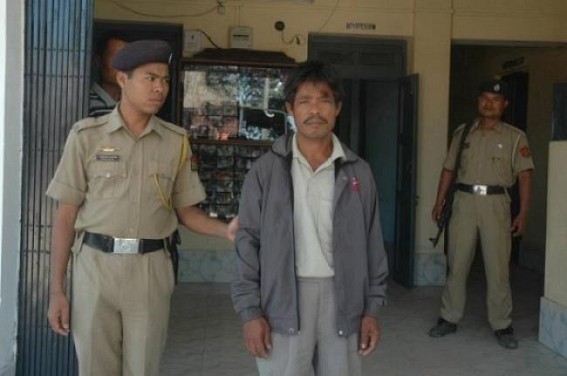TIWN

AGARTALA / NEW DELHI, Aug 17 (TIWN): If the government succeeds in persuading the remaining five factions of the NSCN to get on board the peace process, it will weaken several other insurgent groups in northeast India who are heavily dependent on the Naga outfits for arms, financial support and training, experts say.
This will pave the way for peaceful northeast following decades of violence and turmoil, they add.
It is to be mentioned here that after several peace talks finally the NLFT militants in northeastern states of Tripura are also getting prepared to shun arms and join main stream society. According to the sources the talk with the state government and the Union Ministry regarding the surrender of the militants has been finalized.
In 2013-14, a sum of Rs.15.55 crore was released to the northeastern states for payment of stipend to surrendered extremists.
From the last meeting it can be assumed that the outlawed NLFT militants are keen to surrender very soon. The sources said that the NLFT, led by Biswamohan Debbarma is now planning to move towards surrendering before the state police very shortly on several conditions. The central government had held the tripartite meeting in two phases.
Recently, two extremists of the banned National Liberation Front of Tripura (NLFT) had surrendered before DGP K. Nagaraj, at police head quarter (PHQ).
Self-styled NLFT extremist Sunil Mohan Tripura (35) and his associate Sepoy Jatanjoy Tripura (36) surrendered to DGP K Nagraj at the police headquarters and deposited weapons and ammunitions.
However, Parliamentary TIWN from the region have asserted that if the government is able to persuade the various factions of the Nationalist Socialist Council of Nagaland (NSCN) to shun arms, it will have a direct effect on other militant groups in other states, including (NLFT) National Liberation Front of Tripura.
NLFT is going through a time of crisis. The organization is also hit with food crisis and the chairman is turning failure to hold up his organization.
All Tripura Tiger Force (ATTF) Chief Ranjit Debbarma is in jail and NLFT chairman Biswamohan Debbarma is also keen to surrender in the coming days as NLFT is losing its grasp in the state
"The Naga conflict being the oldest is the root of the entire extremism in the northeast. Certainly, if it is resolved and the government successfully convinces all the factions of the NSCN to be part of the accord, then the strength of other militant groups in the region will dwindle," Nagaland's lone Rajya Sabha member Khekiho Zhimomi told TIWN.
The 70-year-old Nagaland People's Front (NPF) leader, who has been familiar with the Naga conflict for decades, said that even ULFA, which started claiming a sovereign Assam, picked up arms after drawing inspiration from the Naga National Council (NNC) and the NSCN.
On June 3, the NSCN-IM (Isak-Muivah) and the Indian government had signed the Naga Peace Accord, concluding almost 20 years of peace negotiations that started in 1997 after the group signed a ceasefire agreement.
The northeast has over 50 active extremist groups.
C.L. Ruala, Mizoram's lone Lok Sabha member, told TIWN: "Weakening other extremist groups of the northeast by persuading NSCN factions to join the Naga Accord is what the government has been actually trying to do. It is like killing two birds with one stone."
"Unlike the NSCN's factions, emerging extremist outfits of Manipur/Meghalaya do not have enough manpower or funds to operate independently. NSCN has been the backbone of militancy in the region that is likely to go now. This is completely in favour of the region," Ruala noted.
Naba Sarania, a Lok Sabha member from Assam's Kokrajhar district, told TIWN: "By bringing all the factions of NSCN under the Naga Accord, the government will destroy the hideouts of all other militant groups of the region, mostly located in the deep forests of the India-Myanmar and India-China borders."
- 'Intolerable.....' Corporators Lodged FIR against Madhabi Biswas over 'Insane Video' on social media targeting PM & Mayor
- Blood Donation Camp Organized in Sipahijala District
- Yuvrajnagar Panchayat Samiti Chairperson's Husband Denies Molestation Allegations
- CPIM Submits Memorandum for Fair Voter List Revision
- 23 Panchayats in Gauranagar Block Receive Computers, Printers, and LED TVs



